This marks the first "Species Saturday.” “Species Sunday” would also have been alliterative, which was the goal of the name. Alliteration, though cheesy, can be good—but I prefer Saturday.
The Yellow-rumped Warbler seems a fitting bird to start with. Common enough to feel accessible, for people to feel a sense of connection or interest. Interesting enough to provide information to share.
Usually I just hit publish when I feel done writing, but the goal here is to establish structure.
I will not have one of these for every Saturday, but if it’s a species profile, or uses one species as a jumping off point, it’ll be for a Saturday. If people want to read about a bird over the weekend—1,000 words or so, nothing crazy—I’ll provide something.
I also wanted to write about a bird I know I have photos of to include.
This worked in favor of the Yellow-rumped Warbler, of which I’ve taken many photos. I started writing about the Saltmarsh Sparrow—but have zero pictures.
All of this has raised a productive question: What birds do I have pictures of that it’d also be cool to write about?
Pine Warbler, Yellow Warbler, Brown Creeper. American Oystercatcher—a bright-billed, high-pitched shorebird. Gray Catbird, Horned Grebe, Golden-crowned Kinglet, Sanderling. Eastern Meadowlark, Barn Swallow, Tree Swallow, Prothonotary Warbler. There are plenty. That doesn’t even start on the raptors.
For now: the Yellow-rumped Warbler.
Sometimes, tongue in cheek, I call these “the chickadee of warblers.” I shouldn’t. It’s not right to speak in that manner about either bird—to decry a chickadee as “commonplace” or “unexciting,” imply the same of Yellow-rumped Warblers.
Sometimes, looking at a Yellow-rumped Warbler, I think to myself: That bird acts as if it doesn’t know how special it is. It makes itself readily known, lands out in the open unobstructed.
Its song and calls aren’t exactly furtive either. Thoreau wrote of a Yellow-rumped Warbler’s song—or as he called them, “myrtle-birds”—“They sing like an instrument, teee teee te, t t t, t t t, on very various keys, i. e. high or low, sometimes beginning like phe-be.”
I won’t try so specifically to describe the sound, but to think of an English language analog as far as what the sounds accomplish, they could be translated as: “Hey.” “Over here.” The calls, which are quick, called “chips” and “tinks” by the Cornell Lab of Ornithology, could be “hey,” “hey.” The song is more insistent: “hey…hey…hey, hey, hey, hey, hey.”
You’ve probably seen one. This bird is “one of our best-known warblers,” “abundant and widespread.” Not dainty, not shy. Thoreau called them “Chubby birds.”
They’re “active, and you'll often see them sally out to catch insects in midair, sometimes on long flights.” As explained in Merlin, this “sallying” often occurs from a conspicuous perch. By that logic, you can see them perching or see them sallying, conspicuous, unobstructed.
If you put me on the spot—what warbler will you see next?—I’d say Yellow-rumped. I wanted to write about a bird that is special because it is a warbler, but also special because the stars don’t have to align for you to see one.
Yellow-rumped Warblers have two important forms. Really, there are four—but we will focus on the two you might see. The other two are the Black-fronted Warbler and the Goldman’s Warbler. If your birding is confined to the United States, as mine is, the ones you need to worry about are: Myrtle and Audubon’s.
Depending where you most often bird, you are seeing one of these two. I bird in the east, New England, so the Yellow-rumped Warblers I see are Myrtle Warblers. Thoreau, being also in New England, saw Myrtle Warblers—hence “myrtle-birds.” Any readers in the west, you are likely seeing Audubon’s Warblers, though some Myrtle Warblers turn up over your way.
How to tell one from the other? Myrtle birds have a white throat; Audubon’s have a yellow throat. There are some other differences. Also, as explained on Audubon’s website: “The ‘Myrtle’ form, mostly eastern, also winters commonly in streamside trees near coast in Pacific states. ‘Audubon's’ is a very rare stray in the East.”
If you live alongside and recognize Myrtle warblers, chances are you won’t see an Audubon’s—“very rare”—any time soon.
I’ve seen countless Yellow-rumped Warblers, but living where I do, each one was Myrtle. Because I live where I do and bird often, they were recognizable to me. The question, is that a Myrtle or an Audubon’s? never occurs to me. It’s a Yellow-rumped Warbler. Yellow-rumped, for me, is synonymous with Myrtle; Myrtle is synonymous with Yellow-rumped.
This is an unconventional take on my part—usually I’m vociferously in favor of any useful knowledge—but it’s a take I have nonetheless: If you see one of these warblers, just be happy to be watching a bird. Myrtle, Audubon’s, doesn’t matter so much. That’s why we watch birds, after all—because it’s a great way to feel happy, to have a largely harmless connection with the wild. Unless it’s a possibility you’ll see either of these—if you live by “streamside trees near coast in Pacific states,” for example—just learn the bird you might actually see.
Find the bird that’s synonymous with “Yellow-rumped” where you are and learn the field markings. If you see a warbler and have to ask what the hell is that, then, maybe, if the field markings align, consider the other Yellow-rumped form. For me, that’d mean Audubon’s; for anyone in the west, Myrtle.
While most warblers migrate away, a Yellow-rumped Warbler can stay even in New England for winter—though I still would not call it a “cold weather bird.” Thoreau did notice, in late October 1857, “many myrtle-birds now…on the advent of cooler weather.”
Berries sustain them. They’re capable of digesting the wax. No other warbler is. Most warblers rely only on bugs. Yellow-rumped Warblers branch out. Warblers and winter are typically at odds, but you can see a Yellow-rumped Warbler in the wintertime. It can serve as a reminder of what’s to come when it warms up.
When it warms up, there will be plenty of warblers to see. The Yellow-rumped, if you see a winter warbler, can tide you over when you’re bored of Dark-eyed Juncos—“snowbirds”—or waterfowled out.
In spring or summer, you might be out pounding the trail in pursuit of a Blackburnian or a Magnolia. Yellow-rumped Warblers will give you sightings to sustain you until you see your target species.
As part of the appeal of a striped bass is that anybody can catch one—“everyman’s fish”—part of the appeal of a Yellow-rumped Warbler is that anybody can see one. Everyman’s warbler.





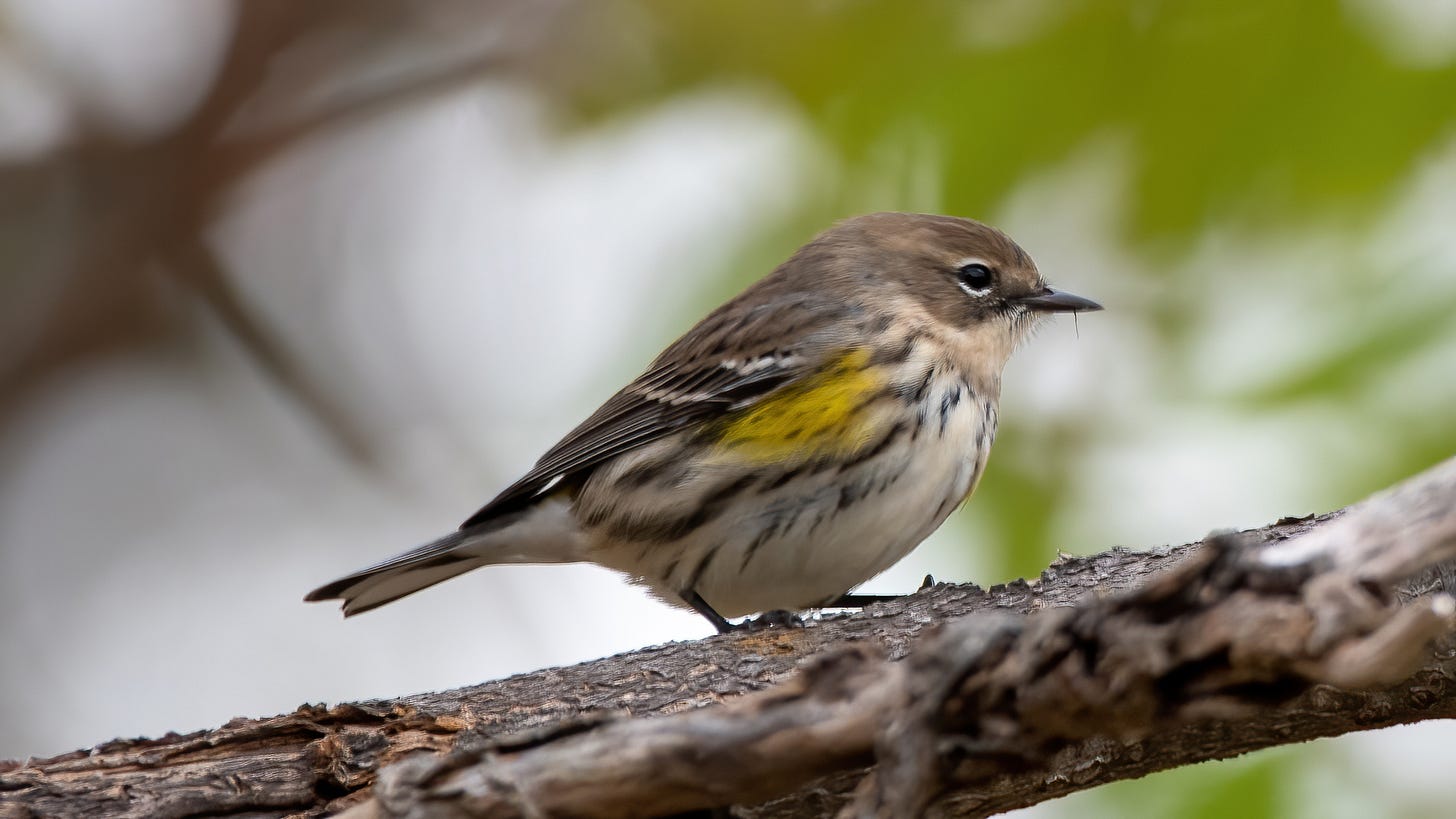
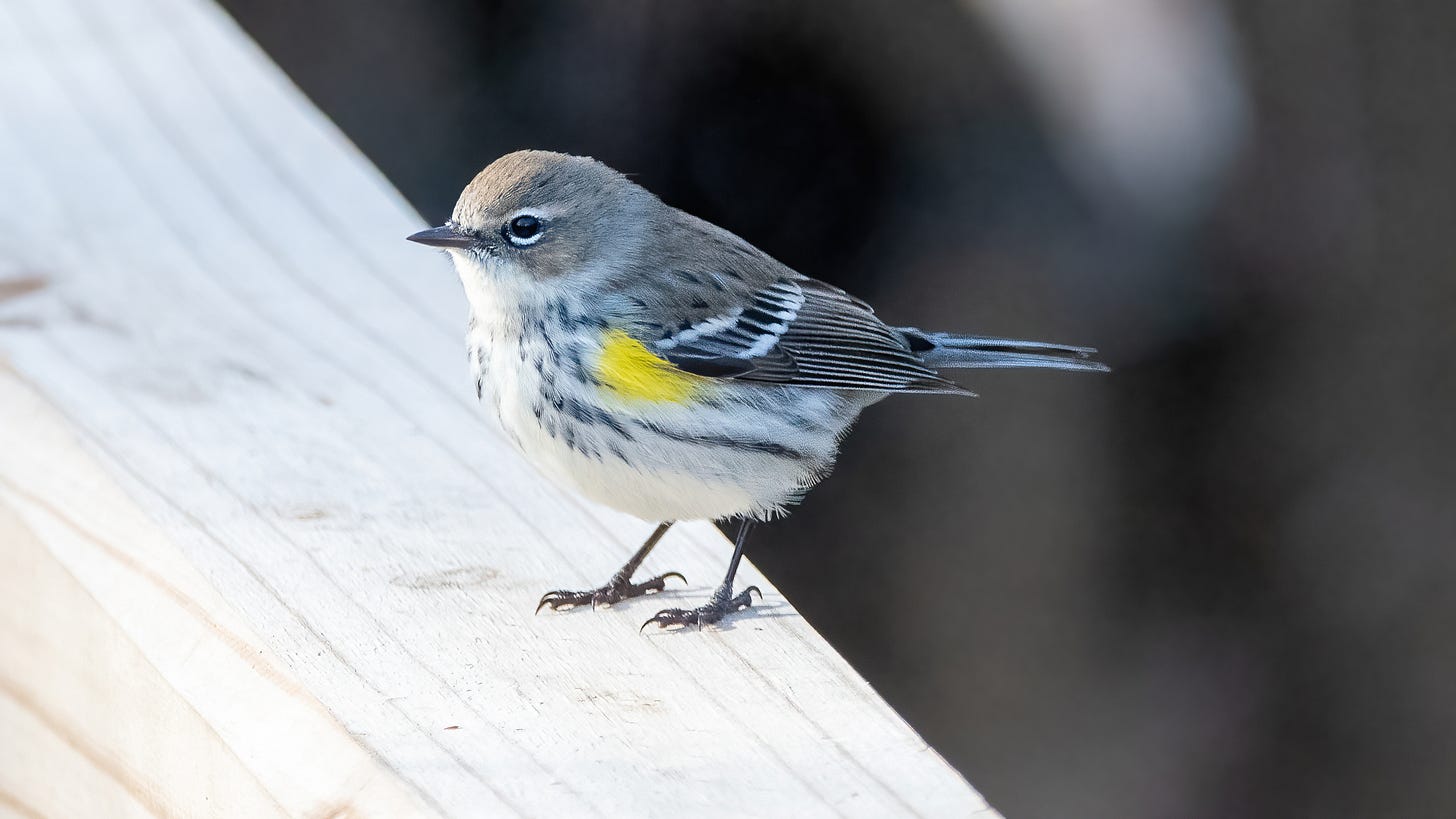


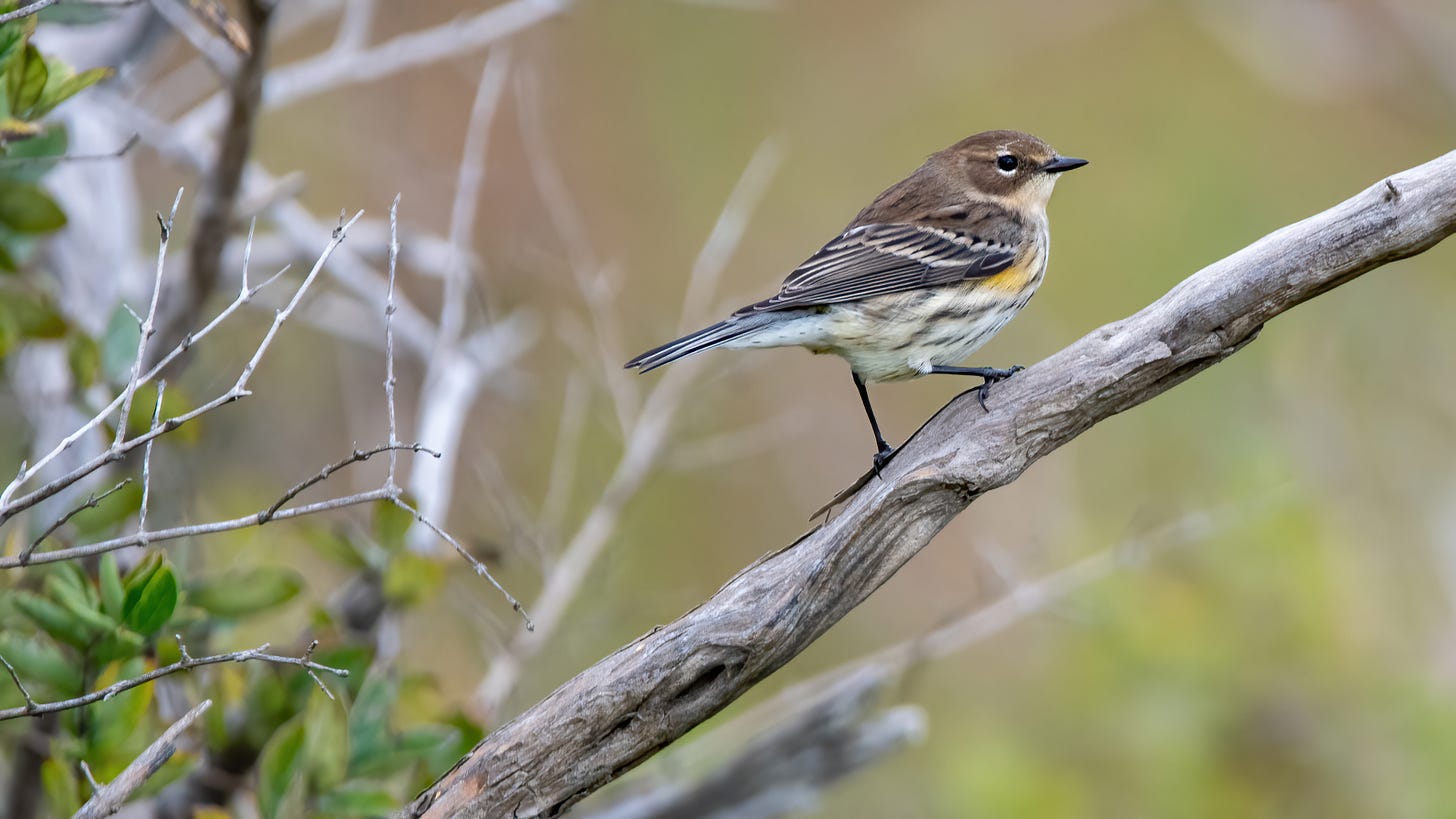
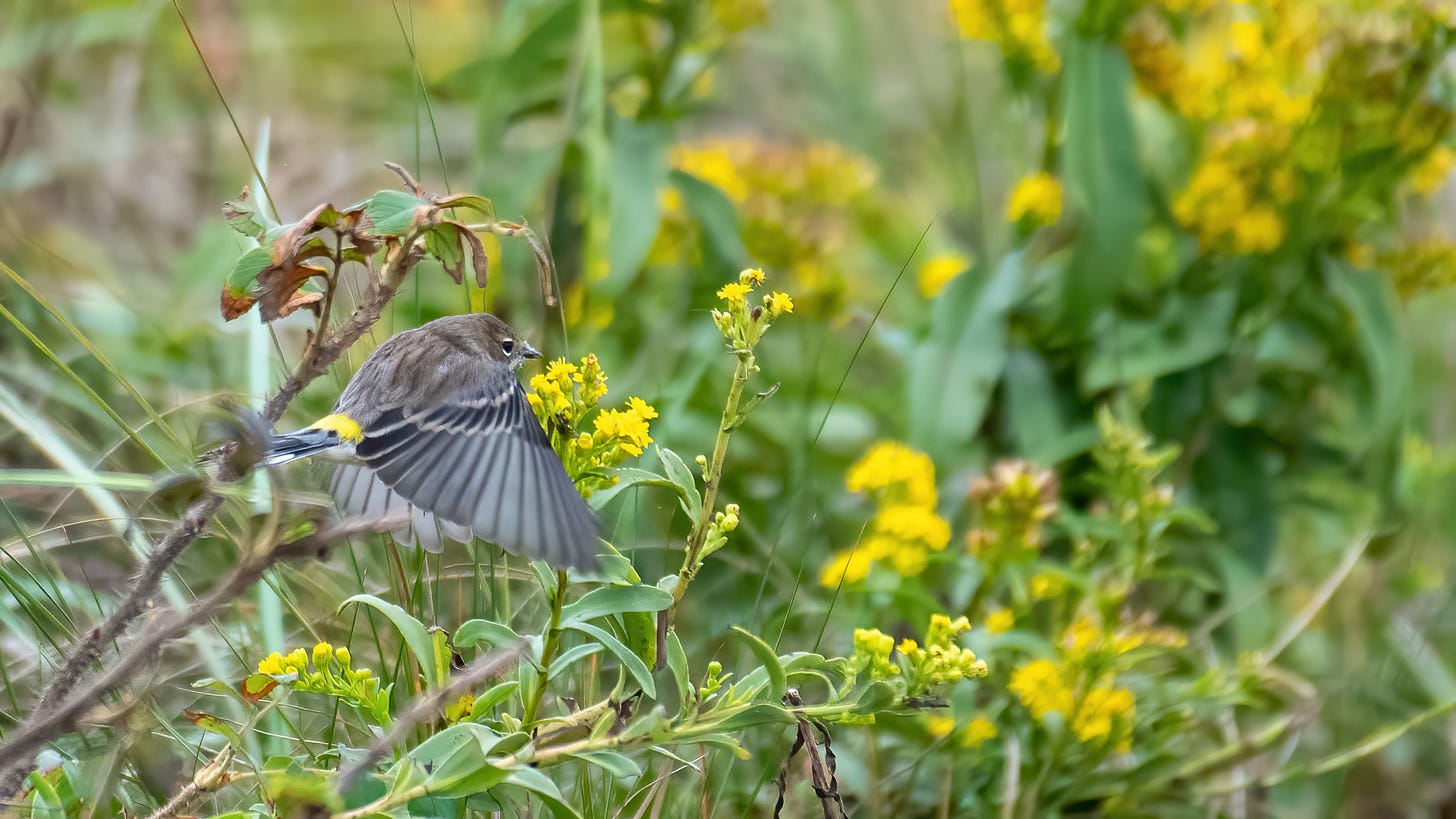

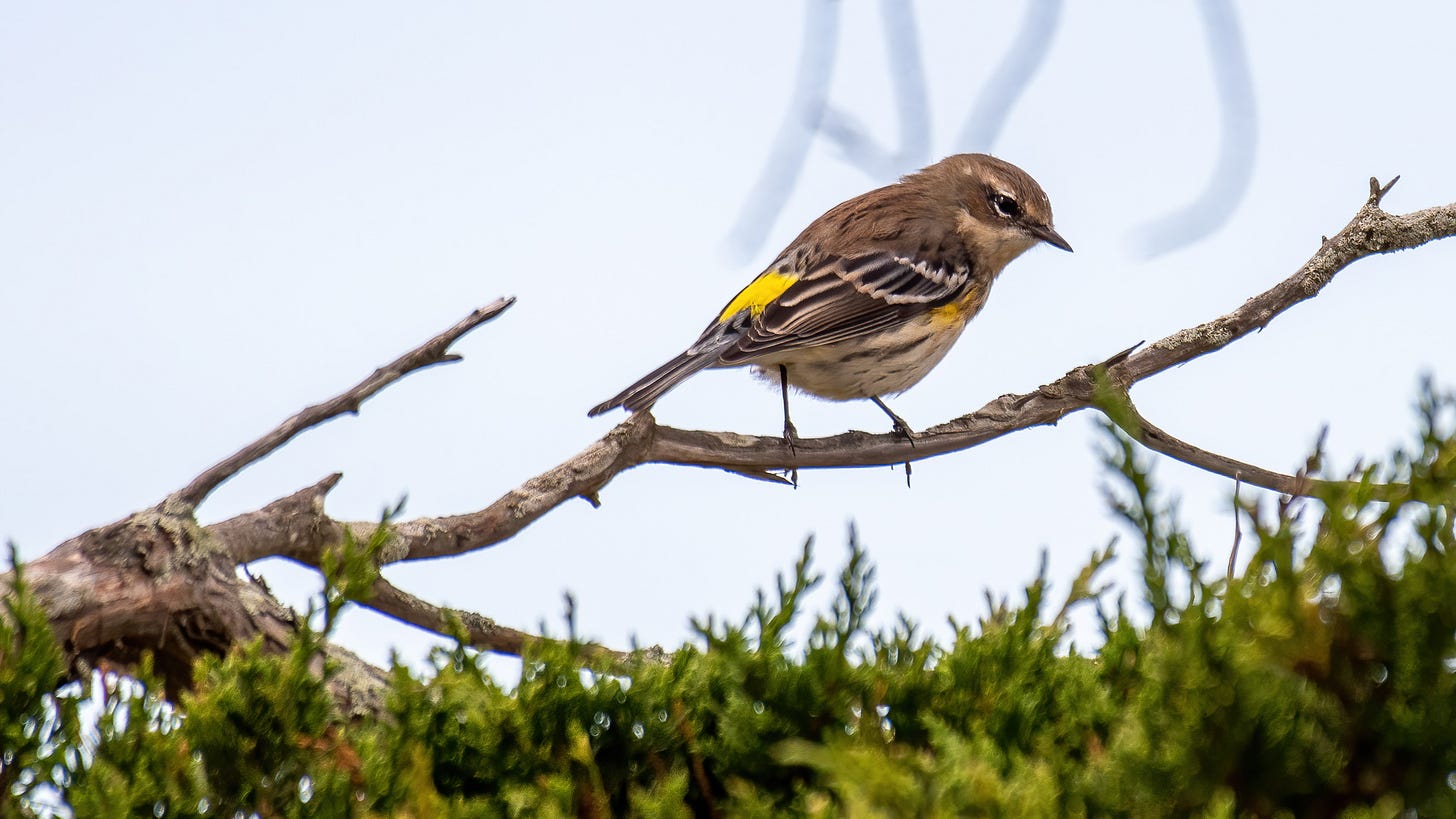


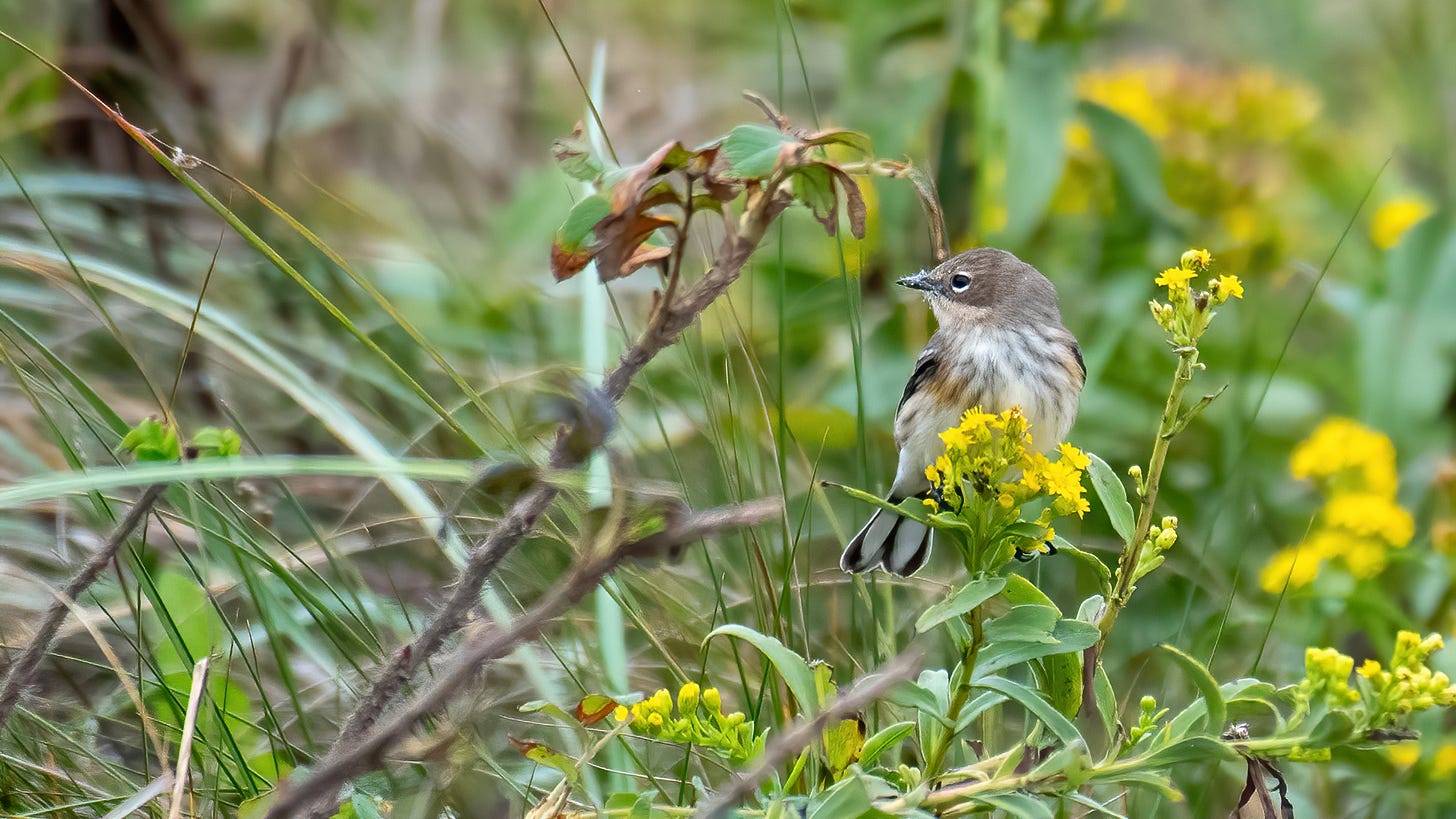
James- With the spring-like weather last week, I witnessed a return of birds. I attempted to take some photos but could never get close enough. I kept thinking of you, in awe of your photography.